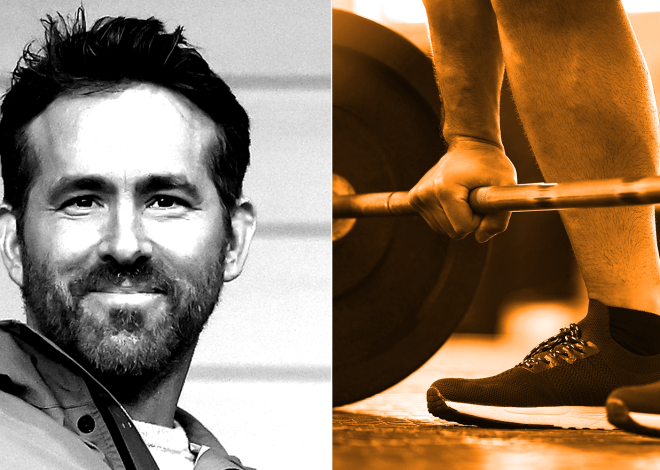
Fitness in primary school age: Our children are so unathletic
Children are less athletic and less mobile than in the years before the pandemic. The Baden-Württemberg Children’s Gymnastics Foundation has published its new fitness barometer – with these results.
On the day that the Children’s Gymnastics Foundation of the State of Baden-Württemberg announces how worrying the fitness of three to ten year olds is, not a child from the Michelfeld primary school sits on their chair in the classroom. Instead, around 140 students romp around in the playground, play with water games, compete in climbing or exhaust themselves on a scavenger hunt. “We’re just having our exercise week again,” explains Rector Eberhard Marstaller. And during this time the children are asked not to sit still.

It is not the only campaign by the primary school in the Schwäbisch Hall district. “Exercise and sport is one of our three main topics,” says the rector. As a passionate athlete and long-time educator, he knows from experience how much more concentrated children are in class if they have previously exerted themselves physically. Therefore, frontal teaching is largely avoided in school. Instead, there are lots of learning games and exercise breaks: “If, for example, the children become inattentive and fidgety, the lesson is interrupted – and they go out to the playground,” says Marstaller. In addition, the curriculum includes at least four hiking days and several action weeks throughout the school year, in which students are introduced to the possibilities of exercise.
The children lack strength and endurance
This is something that many other children in this age group are severely lacking in: The currently published Fitness Barometer 2024 by the Baden-Württemberg Children’s Gymnastics Foundation shows that children in the southwest have significantly decreased in terms of mobility, strength and endurance compared to previous generations. Since the first test in 2012, data has been collected from more than 37,700 children from 276 locations, representing around five percent of the country’s three to ten year olds.
Jump from a standing position – as far as your body length corresponds. This wasn’t a problem for children a few years ago. “They often jumped even further,” says sports scientist Klaus Bös from the Karlsruhe Institute of Technology (KIT), who is also the test author of the fitness barometer. Today, ten-year-olds can hardly cover the distance of one meter and 40 centimeters. “The children also performed worse in the 20-meter sprint and when it comes to running fast for six minutes,” says Bös. The drop in performance has been significant since the corona pandemic.
Children move less than an hour a day
The consequences of the lockdown are far from over: “I have assumed so far that after the end of the pandemic we can only speak of a corona dip,” says Bös. But other studies have now shown that the restrictions on sports and games during the pandemic have already led to behaviors that are sometimes maintained permanently.
In January, the Federal Institute for Population Research (BiB) warned that even before the pandemic, young people in Germany and Europe were exercising for less than the one hour a day recommended by the World Health Organization. With the start of the pandemic, movement time fell by an average of around a quarter. Another finding: the older the children got, the less they moved.
Younger children like to move
“We urgently need to think about how we can encourage children to be more physically active,” says Bös. It wouldn’t take much: a ball, a rope or a climbing frame could be enough. Or a tree trunk on the side of the path – to balance over. “Younger children in particular really like to move,” says the exercise expert. It is important that they are guided and motivated.

There is a lack of opportunities: for example, because there are not enough places in cities for free play or because children are not taught well enough how important physical exercise is for their own development. Daily life has also become more intense, and parents often do not have the time to go out with their children in the afternoon after kindergarten, school and work.
The proportion of obese children is increasing
From a purely statistical perspective, families with a higher level of education pay more attention to ensuring that their children exercise – be it at school or in a sports club. In schools, the authors of the fitness barometer note, more emphasis is placed on cognitive performance instead of on sport.
“Our children are already sitting themselves ill in primary school,” warns Thomas Kauth, a pediatrician in Ludwigsburg who worked on the current fitness barometer. The doctor has focused on sports and nutritional medicine and knows: “The amount of exercise is significantly reduced due to the constant sitting, reading and learning.” The number of children in this age group who are already struggling with overweight or even obesity is increasing. This “jump in weight” is alarming.
Children learn better when they move
It is a scientific truism that children can learn better when they move: This activates motor centers in the brain, which are also important for information processing and storage. Children also discover a passion for exercise at an early age and if this is encouraged, they retain it into adulthood, says Bös. This is an important prerequisite for a healthy life.
Politicians are waiting for help
So far, politicians have been very reserved on this topic: there was a national movement summit initiated by the federal government in 2022. But Bös complains that it didn’t result in anything more than an assertion that they wanted to collect ideas on how to motivate children to enjoy exercise more. Federal Health Minister Karl Lauterbach (SPD) also announced that, in view of the increasing number of overweight children as a result of the pandemic, he would provide more support for physical education and the work of sports clubs.
The schools are therefore asked to take initiative in many places – like in Michelfeld: There, for example, the headmaster Marstaller sat down with the mayor of the community, the churches and the sports clubs. “We are fortunate that our movement concept is supported and shaped by the entire community,” says Marstaller. Everyone takes part. This means that exercise becomes a matter of course, not just in everyday school life.
This is how fitness is measured
Fitness barometer
The Children’s Gymnastics Foundation’s fitness check includes a motor skills test – such as the 20-meter dash, jumping from a standing position or the torso bend, in which the children bend their upper body downwards as far as possible. We also look at whether they can balance backwards or how quickly and consistently they can jump side to side. Push-ups, sit-ups and a six-minute run should be manageable for elementary school students.
Movement
At kindergarten age, children should exercise for at least 180 minutes a day – in everyday life, in their free time and in activities such as children’s gymnastics. At primary school age, 60 minutes of exercise per day should be covered in everyday life, and a further 30 minutes should be covered by playing in your free time or in activities such as club sports. All age groups should also do some physical activity two to three times a week – for example on a bike ride. The Kinderturnstiftung shows online how parents can be active in sports with their children: www.kinderturnstiftung-bw.de/omoungideen/

Ethel Purdy – Medical Blogger & Pharmacist
Bridging the world of wellness and science, Ethel Purdy is a professional voice in healthcare with a passion for sharing knowledge. At 36, she stands at the confluence of medical expertise and the written word, holding a pharmacy degree acquired under the rigorous education systems of Germany and Estonia.
Her pursuit of medicine was fueled by a desire to understand the intricacies of human health and to contribute to the community’s understanding of it. Transitioning seamlessly into the realm of blogging, Ethel has found a platform to demystify complex medical concepts for the everyday reader.
Ethel’s commitment to the world of medicine extends beyond her professional life into a personal commitment to health and wellness. Her hobbies reflect this dedication, often involving research on the latest medical advances, participating in wellness communities, and exploring the vast and varied dimensions of health.
Join Ethel as she distills her pharmaceutical knowledge into accessible wisdom, fostering an environment where science meets lifestyle and everyone is invited to learn. Whether you’re looking for insights into the latest health trends or trustworthy medical advice, Ethel’s blog is your gateway to the nexus of healthcare and daily living.



